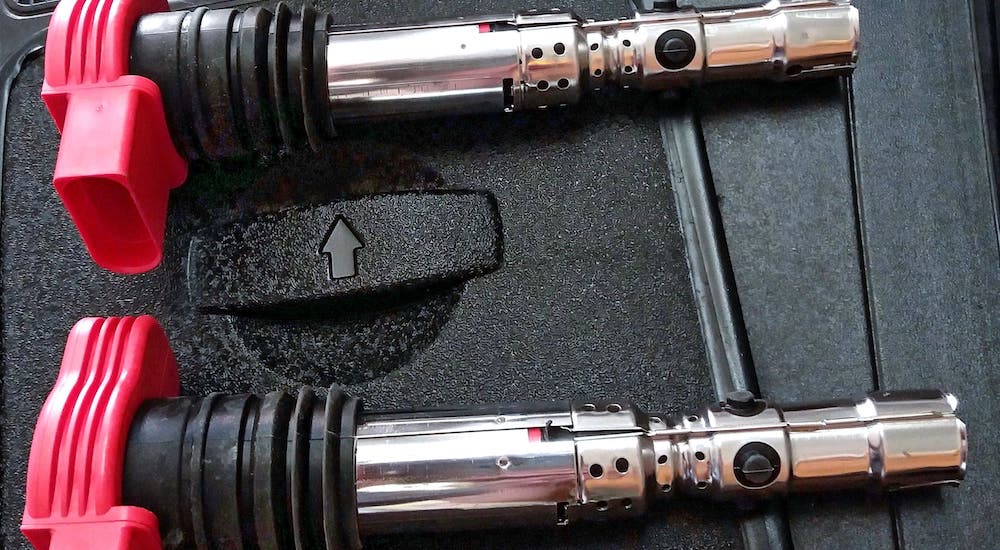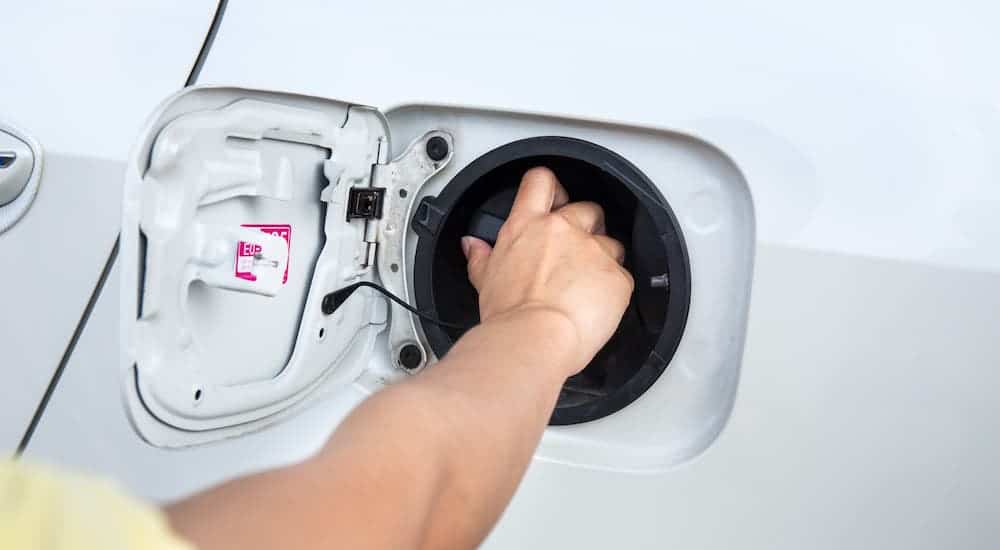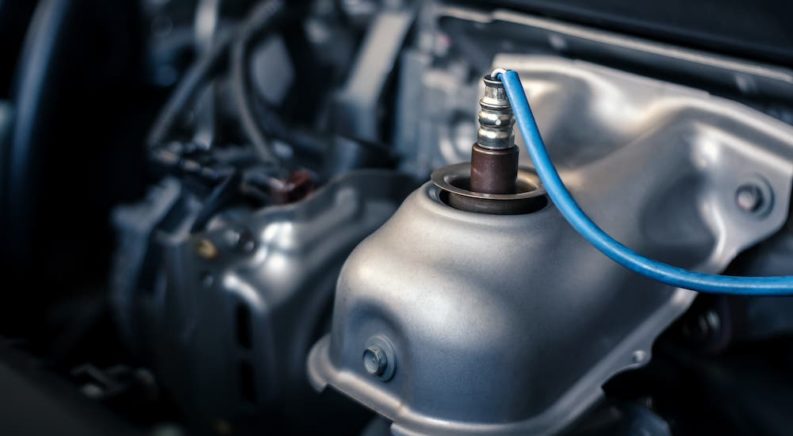For many drivers, the check engine light can be the source of a lot of mystery and concern, indicating that something is wrong, but you’re not sure what. You might wonder if low oil can cause your check engine light to come on, and the answer is no. Low oil has its own indicator light on your dashboard (it looks like an oil can – kind of like a boat – with a drip coming out of it) that will come on if your oil is low.
There are a number of things that can make your check engine light come on, but low oil is not one of them. It’s possible that you might have low oil in your engine and another issue causing your check engine light to come on – but while they might be related, low oil is not why your light is on. Whatever the reason, it’s important to properly take care of the issue causing your check engine light to illuminate – not only so that it will go off, but also to make sure your vehicle is in great shape. Let’s take a few minutes to look at some common reasons your light might come on and what to do about them.
Oxygen Sensor Failure
This is one of the most common reasons for a check engine light to come on, and while it is not the most expensive, it will still likely set you back a couple of hundred bucks. The oxygen sensor, or O2 sensor, is located behind your engine and is a part of your vehicle’s exhaust system. As your engine operates, gasoline is mixed with air to fuel small explosions that power your vehicle – this is the “internal combustion” you’ve heard so much about.
The oxygen sensor monitors how much oxygen is in the exhaust coming out of your engine and sends this information to your car’s computer. With this information, adjustments can be made to air levels in the mixture powering your vehicle, which helps keep your car running at peak performance. If the oxygen sensor isn’t working right, it can negatively impact your vehicle’s fuel efficiency and makes your car run worse than it should. Ignoring it can also result in damage to your engine and other components since things are not running as they’re meant to.

Ignition Coil Failure
Ignition coils are an essential part of your vehicle’s engine. They provide the electricity that your spark plugs use to make their titular spark and ignite the fuel and air in your engine’s cylinders. You likely have one ignition coil for each cylinder, so a powerful V8 engine will have eight coils, while an I-4 engine will have four coils.
If one or more of your coils are not working properly, then your vehicle might still run, but it will typically feel off or run roughly since the cylinders are not all working properly. Replacing your ignition coils will usually run a couple of hundred dollars, though the price depends on if you do the work yourself. Ignoring this problem can result in serious issues, however, including damage to your engine since it’s functioning improperly.
Spark Plug Failure
Just like the ignition coils, if one or more of your spark plugs is not working correctly, then this can cause your check engine light to come on. As I said above, the spark plug does just what its name suggests: it creates a spark that ignites a tiny explosion in the cylinder of your vehicle’s engine to generate power. Just like with the ignition coil, you likely have a spark plug in each of your vehicle’s cylinders.
Failing spark plugs can cause your engine to misfire, which you’ll typically hear and also feel while driving. This can be especially noticeable when accelerating and not only impacts your vehicle’s fuel economy but can even cause the engine to shut off on its own. Replacing your own spark plugs is fairly easy and inexpensive, though the cost will increase if you have to replace more than one at a time.
Catalytic Converter Failure
You’ve probably heard of a catalytic converter before since it’s a pretty common automotive term, even if you’re not sure what it does. It’s a part of your car’s exhaust system, which means it’s located “behind” the engine in your vehicle’s powertrain. It converts the carbon monoxide created by the internal combustion process of your engine into less-harmful carbon dioxide, which is then vented out through your vehicle’s exhaust.
A failing catalytic converter is a big problem that not only impacts how your vehicle runs, but will most likely result in you failing an emissions test in your state. Proper maintenance of your vehicle, like routine oil changes, can help prevent damage and failure of your catalytic converter. Unfortunately, it’s one of the more expensive items to fix when looking at an illuminated check engine light, especially when buying one from your vehicle’s original manufacturer.

Loose Gas Cap
This is a surprisingly common potential cause of your check engine light coming on, and also the easiest to fix if it’s the issue. Your gas tank is directly connected to the engine so that gas can flow to it for combustion, and it requires a proper seal to get the right internal pressure. If your gas cap is not sealed correctly, then that pressure gets thrown off and can trigger your check engine light to come on.
One of the first things you should do if the light comes on and nothing feels or sounds different, check to make sure your gas cap is on properly. If your gas cap is damaged in any way, such as if it is cracked or no longer threading on securely, then replace it. This will restore proper pressure and fix the issue – plus, a new gas cap is a very inexpensive solution for this problem.
Mass Airflow Sensor Failure
The Mass Airflow (MAF) sensor in your vehicle is located on the engine, and it monitors how much air is entering the engine to mix with fuel for combustion. Just as the oxygen sensor monitors oxygen coming out of the system, the MAF sensor monitors air going into it. If there are problems with it, then you’ll end up with the wrong amount of air mixing with gas to burn, which will impact how your engine runs.
If you notice your vehicle is idling roughly, has trouble starting, or your gas mileage is not as good as it should be, then a faulty MAF sensor might be your issue. This will usually cost a couple of hundred bucks to replace, a bit less if you do it yourself, though it’s certainly not as simple as changing your gas cap or spark plugs. Still, it’s a pretty easy solution.
What About a Blinking Check Engine Light?
If your check engine light comes on and it’s steady, then you should get it checked out – maybe try some simple solutions first – as soon as possible. You don’t want it to become a more serious issue and a more expensive fix. If the light is blinking, however, then that means you have a much more critical issue, and you need to get safely to the side of the road and turn your vehicle off. Don’t drive your car unless you absolutely have to, and get it to a mechanic you trust immediately – preferably by towing it. A blinking light is very serious, and not heeding its warning can result in catastrophic damage to your vehicle and personal injury.

